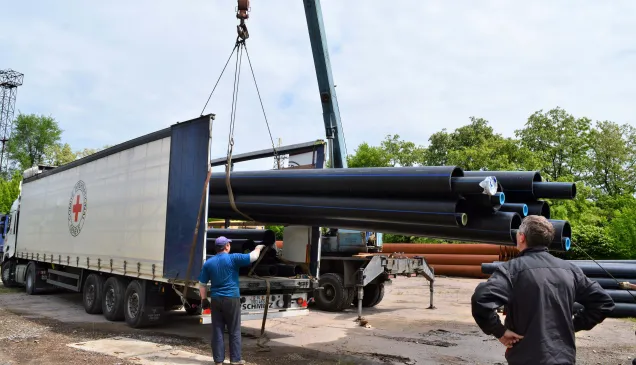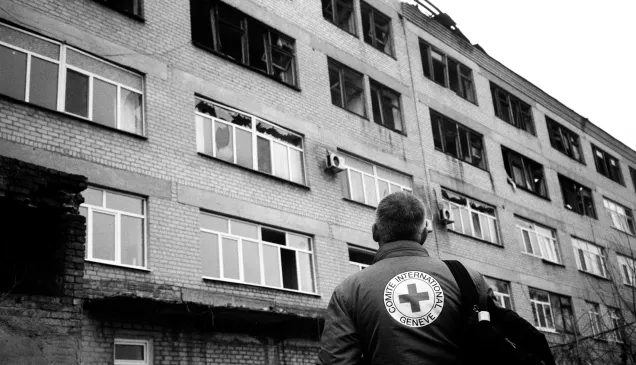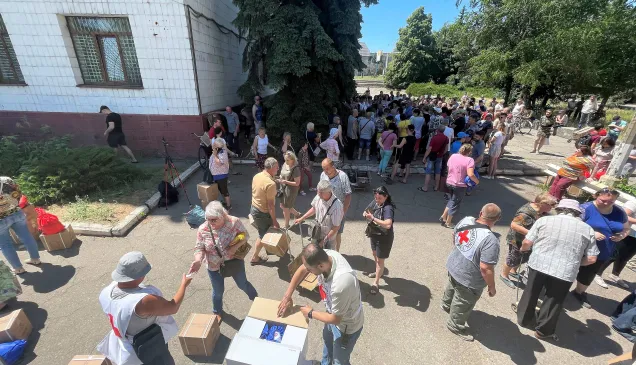Ukraine: Winter along the contact line
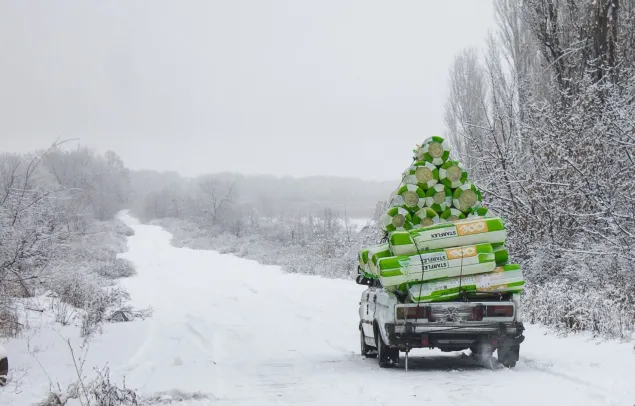
A car with insulation material distributed by the ICRC in Luhansk region during the onset of the winter season in 2018.
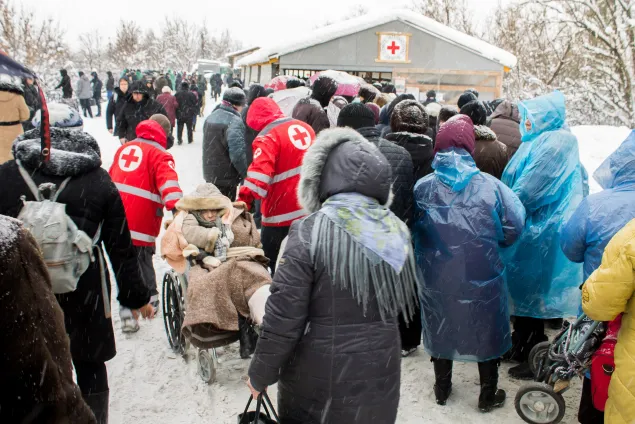
Stanytsia Luhanska crossing point, January 2018
On a cold and snowy day, people cross the contact line at the Stanytsia Luhanska entry-exit crossing point. The Red Cross volunteers, who work in the ICRC’s heating point, help to move an elderly woman in a wheelchair. They also help to shovel the snow to help maintain the road’s access.
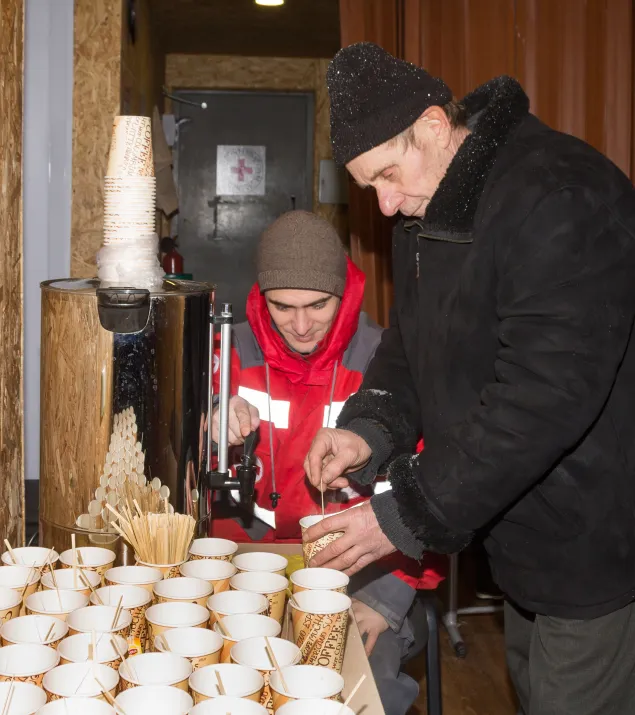
Heating station at Stanytsia Luhanska crossing point, January 2019
While waiting for his turn to cross the line of contact in Stanytsia Luhanska, a man is preparing a cup of tea in the heating point specially installed by the ICRC for people to get some rest. The Red Cross volunteer is serving tea to others who need to warm up.
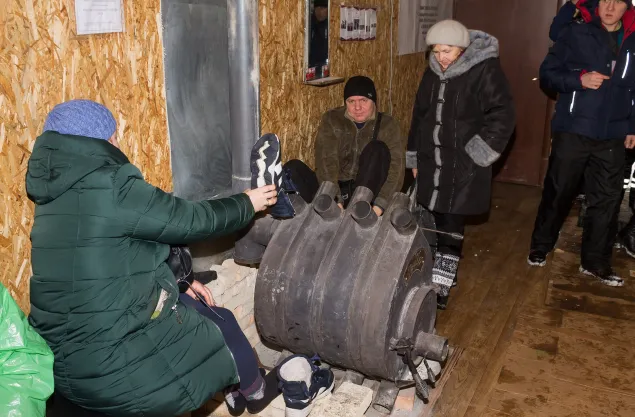
Warming up at Stanytsia Luhanska crossing point, January 2019
Snow or slush, thousands people cross the contact line every day. While waiting for hours in the winter weather, their shoes often get wet and cold. They visit the ICRC heating point to rest, warm up themselves, drink tea and dry their shoes on the potbelly stove.
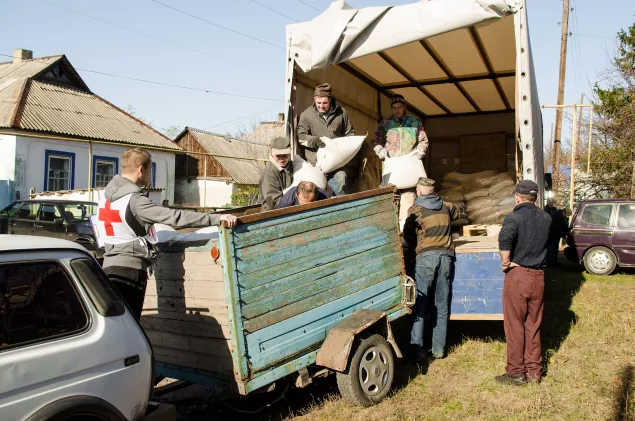
Fodder distribution for livestock holders, November 2018
Together with the local Red Cross volunteers, the ICRC is distributing fodder to help people support their livestock during the winter season. Very often, the fields around the villages along the contact line are mined, which means the residents are not able to prepare animal feed.
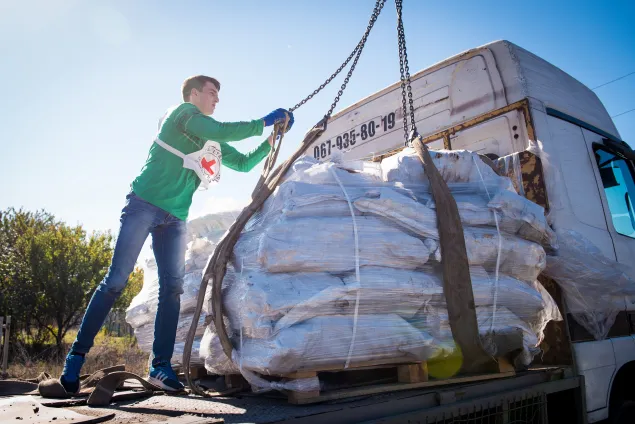
Delivery of wooden briquettes, October 2018
Apart from providing cash assistance to the people to purchase heating material, our team distributed wooden briquettes to the residents of the frontline villages, ahead of the onset of the 2018 winter season.
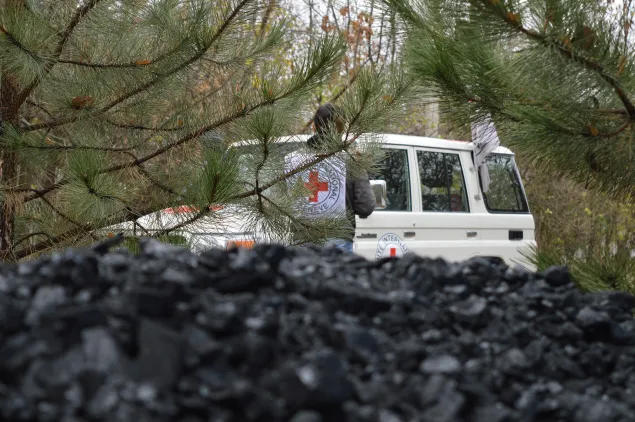
Coal distribution, October 2018
The ICRC distributed almost 26,000 tonnes of coal and wooden briquettes during the 2018 to 2019 winter period, on both sides of the contact line in the Donbas.
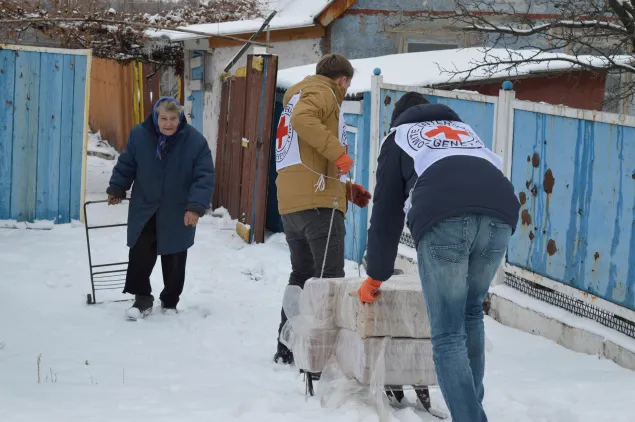
Delivering wooden briquettes to an elderly woman, November 2018
Many people living in isolated villages have no access to markets. We help by providing them with the material to heat their houses, which we help deliver throughout the winter season.
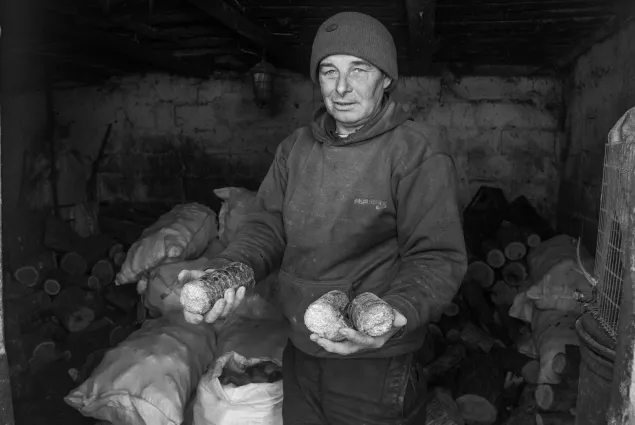
Heating material as part of winter assistance, February 2018
With temperatures sometimes dropping to as low as -25 celsius, village residents need heating material to warm their houses. The ICRC helps the most vulnerable in remote localities along the contact line, where we are often the only aid agency able to reach the people.
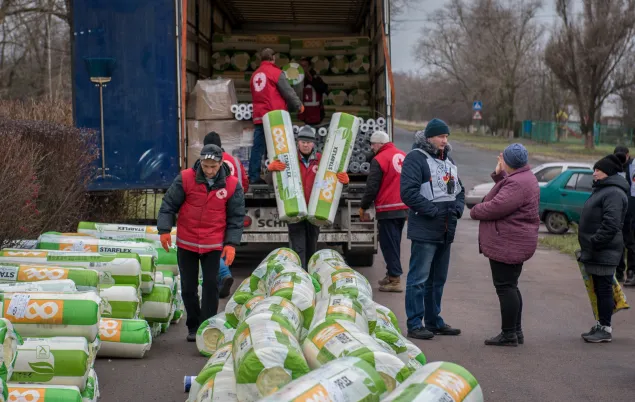
Distribution of insulation material, December 2018
The ICRC distributed material to insulate walls and roofs of the houses of the residents of towns and villages located near the contact line in Donetsk and Luhansk regions.
It has been nearly five years since the start of the conflict in eastern Ukraine. Many people living along the contact line in the Donbas lost their income and continue to bear the brunt of the ongoing hostilities. Their situation worsens in winter as damaged walls, roofs and windows let the cold in. The drop in temperature is bitterly felt not only inside buildings, but also on the road, including during the strenuous journey to cross the contact line.
In addition to regular expenses, people need to buy materials to keep their houses warm. While heating is becoming more costly, in some areas it can be difficult to obtain hard fuel. Accompanied by the ongoing hostilities, winter season creates challenges for the people who are already living with disrupted public services and accrued infrastructure damages.

